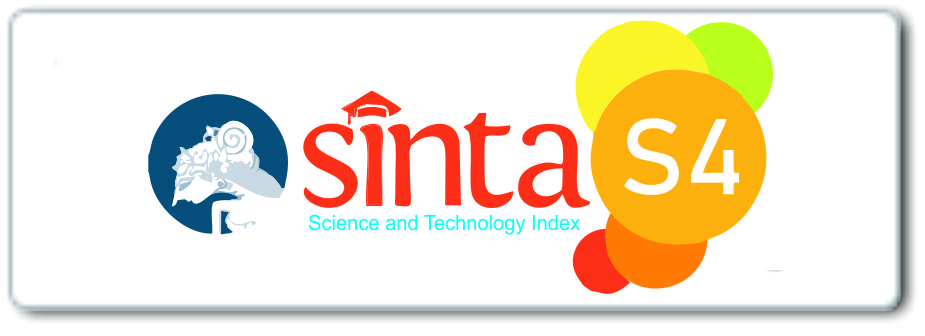A Holistic Approach to Blood Glucose Management: Foot Exercise and Laughter Therapy in Older Adults with Type II Diabetes Mellitus
DOI:
https://doi.org/10.56988/chiprof.v4i3.105Keywords:
Blood Glucose, Diabetes Mellitus Tipe II, Foot Exercise, Laughter TherapyAbstract
This study compares the effectiveness of foot exercise and laughter therapy in reducing blood glucose levels in older adults with Type II Diabetes Mellitus. The objective is to determine which intervention has a greater impact on lowering blood glucose and promoting overall well-being. An independent samples t-test was conducted to compare the reduction in mean blood glucose levels between two intervention groups: foot exercise and laughter therapy. The assumption of equal variances was met based on the results of Levene’s test (p > 0.05). Both interventions resulted in significant reductions in blood glucose levels, but laughter therapy showed a slightly greater reduction. Foot exercise improved insulin sensitivity and glucose uptake, but may not be suitable for individuals with mobility issues. In contrast, laughter therapy not only reduced blood glucose levels but also promoted psychological benefits such as improved mood and reduced anxiety, which are crucial for diabetes management. The accessibility and lower physical demands of laughter therapy make it an attractive option for older adults, especially those with physical limitations. The findings suggest that laughter therapy offers a more holistic approach to diabetes management by addressing both physical and emotional well-being. This study highlights the potential of laughter therapy as a sustainable, low-impact intervention for improving health outcomes in older adults with Type II Diabetes Mellitus.
Downloads
References
World Health Organization, “Diabetes,” no. November, pp. 1–5, 2021, [Online]. Available: https://www.who.int/news-room/fact-sheets/detail/diabetes.
Pan American Health Organization, “Diabetes,” 2022. https://www.paho.org/en/topics/diabetes.
STATISTA, “Countries with the highest number of diabetics worldwide in 2021,” STATISTA, vol. 2021, no. 212, pp. 2019–2022, 2021, [Online]. Available: https://www.statista.com/statistics/281082/countries-with-highest-number-of-diabetics/.
IDF Diabetes Atlas, “Diabetes around the world in 2021,” pp. 32–34, 2022, [Online]. Available: https://diabetesatlas.org/.
KPKI, “Survei Kesehatan Indonesia Tahun 2023,” 2023. [Online]. Available: https://www.badankebijakan.kemkes.go.id/ski-2023-dalam-angka/.
G. Ruben, J. Rottie, and M. Y. Karundeng, “Pengaruh Senam Kaki Diabetes Terhadap Perubahan Kadar Gula Darah Pada Pasien Diabetes Melitus Tipe 2,” eJournal Keperawatan (eKp), vol. 4, no. 1, pp. 1–5, 2016.
Kemenkes, “Lakukan senam kaki Diabetes secara rutin, dimana saja sambil bersantai,” no. November, pp. 1–5, 2018, [Online]. Available: http://p2ptm.kemkes.go.id/infographic-p2ptm/penyakit-diabetes-melitus/page/7/lakukan-senam-kaki-diabetes-secara-rutin-dimana-saja-sambil-bersantai.
Z. Ahmadi, S. Bazzazian, B. Tajeri, and A. Rajab, “Laughter Therapy on Self-Compassion and Hyperglycemia in the Elderly with Type 2 Diabetes,” MEJDS, vol. 10, no. 20, 2020.
D. Kurniawan, “Pengaruh Terapi Tertawa Terhadap Kualitas Tidur Dan Kadar Glukosa Darah Pada Penderita Diabetes Mellitus Tipe 2,” Universitas Katolik Widya Mandala Surabaya, 2018.
D. Pai, “How Laughter Therapy Can Help with Stress , Sleep , and Beyond What Is Laughter Therapy ? Yes , Laughter Therapy Really Works — Here ’ s How,” Sleep, pp. 1–10, 2021, [Online]. Available: https://www.sleep.com/sleep-health/laughter-therapy.
C. N. van der Wal and R. N. Kok, “Laughter-inducing therapies: Systematic review and meta-analysis,” Soc. Sci. Med., vol. 232, no. March 2018, pp. 473–488, 2019, doi: 10.1016/j.socscimed.2019.02.018.
I. G. H. I wayan Candra, I Nengah Sumirta, Terapi Tertawa Menurunkan Kadar Gula Darah Pasien Diabetes Militus, I. Bali: Diva Pustaka, 2014.
A. Friska, “Bagaimana teknik dalam Terapi Tertawa ?,” Dictio, 2020. https://www.dictio.id/t/bagaimana-teknik-dalam-terapi-tertawa/145116 (accessed Jan. 15, 2024).
M. Hirosaki et al., “Laughter yoga as an enjoyable therapeutic approach for glycemic control in individuals with type 2 diabetes: A randomized controlled trial,” Front. Endocrinol. (Lausanne)., vol. 14, no. March, pp. 1–10, 2023, doi: 10.3389/fendo.2023.1148468.
B. S. Wahyu Dwi Ari Wibowo, Roni, Sapondra Wijaya, Yoan Rosa Tiara, “Case Study: The Application Of Laughter Therapy In Type Ii Diabetes Mellitus Patients For Blood Glucose Instability,” Indones. J. Glob. Heal. Res., vol. 6, no. S6, pp. 61–68, 2024, doi: 10.37287/ijghr.v2i4.250.
M. H. U. Wahyu Dwi Ari Wibowo, Sapondra Wijaya, Terapi Tertawa Untuk Lansia, I. Sleman: Deepublish Publisher, 2024.
R. Rosdiana, D. Rasyid, D. Djunaedi, and R. A. Noviar, “Foot Exercises in Controlling Blood Sugar Levels in Elderly People with DM at the Baraka Community Health Center, Enrekang Regency, South Sulawesi,” Int. J. Health Sci. (Qassim)., vol. 2, no. 1, pp. 167–178, 2024, doi: 10.59585/ijhs.v2i1.265.
F. N. Andari, R. Rahmalena, and A. K. Wijaya, “Efisiensi Senam Kaki Diabetik terhadap Penurunan Kadar Glukosa Darah Postprandial pada Klien DM Tipe II,” MAHESA Malahayati Heal. Student J., vol. 3, no. 4, pp. 1052–1063, 2023, doi: 10.33024/mahesa.v3i4.10047.
D. S. Wahyu Dwi Ari Wibowo, Sapondra Wijaya, Susmini, Nadi Aprilyadi, Terapi nonfarmakologis pada pasien diabetes melitus, 1st ed. Yogyajarta: Deepublish Publisher, 2024.
L. S. Rosyid and N. A. Angraini, “the Effect of Foot Exercise on Lower Extremity Sensory,” Lux Mensana, vol. 1, no. 4, pp. 261–271, 2022.
B. Soewito et al., “Kegiatan senam kaki terhadap penurunan kadar gula darah pada lansia dengan diabetes melitus Di Desa Air Satan Kabupaten Musi Rawas,” Penamas J. Community Serv., vol. 4, no. 1, pp. 130–137, 2024, doi: 10.53088/penamas.v4i1.859.
A. Badrujamaludin, O. Ropei, and M. D. Saputri, “Pengaruh senam kaki diabetes terhadap kadar glukosa darah pada penderita diabetes melitus tipe 2,” Holistik J. Kesehat., vol. 17, no. 2, pp. 134–141, 2023, doi: 10.33024/hjk.v17i2.9660.
American Diabetes Association, “Blood Sugar and Exercise,” pp. 1–6, 2022, [Online]. Available: https://www.diabetes.org/healthy-living/fitness/getting-started-safely/blood-glucose-and-exercise.
E. Trisna and M. Musiana, “Pengaruh Senam Kaki terhadap Kadar Glukosa Darah dan Nilai ABI Penderita DM,” J. Kesehat., vol. 9, no. 3, p. 439, 2018, doi: 10.26630/jk.v9i3.976.
A. Wahyuni, “Senam Kaki Diabetik Efektif Meningkatkan Ankle Brachial Index Pasien Diabetes Melitus Tipe 2,” J. Ipteks Terap., vol. 9, no. 2, 2016, doi: 10.22216/jit.2015.v9i2.231.
T. Arif, “Peningkatan Yaskularisasi Perifer dan Pengontrolan Glukosa Klien Diabetes Mellitus Melalui Senam Kaki,” J. Ners dan Kebidanan (Journal Ners Midwifery), vol. 7, no. 1, pp. 082–088, 2020, doi: 10.26699/jnk.v7i1.art.p082-088.
W. A. Wibowo, Susmini, S. Wijaya, and N. Amelia, “The Effect of Laughter Therapy for Depression Level among Geriatric Patients at Pangesti Lawang Nursing Home,” Int. J. Nurs. Heal. Serv., vol. 4, no. 5, pp. 515–521, 2021, [Online]. Available: http://ijnhs.net/index.php/ijnhs/home.
A. R. Zari Ahmadi, Saideh Bazzazian, Biouk Tajeri, “Membandingkan Efektifitas Terapi Tertawa dan Terapi Berbasis Solusi terhadap harapan, kebermaknaan, welas asih, dan hiperglikemia,” Salymat-i itjim (Kesehatan Masyarakat), vol. 8, no. 2, 2021.
I. G. Wirawan, I. K. Suda, N. M. Sukrawati, W. Paramartha, and I. B. Suatama, “Reducing Elderly Health Disorders through Laughing Yoga Therapy: Case Study in Badung Regency,” Talent Dev. Excell., vol. 12, no. 1, pp. 4070–4081, 2020, [Online]. Available: http://search.ebscohost.com/login.aspx?direct=true&db=s3h&AN=144307441&lang=ja&site=ehost-live.
E. Heidari, M. Shirazi, and G. R. Sanaguye Moharer, “The Effectiveness of Laughter Yoga Training on Quality of sleep and positive and negative affect of female teachers with diabetes,” Appl. Fam. Ther. J., vol. 4, no. 4, pp. 49–68, 2023, doi: 10.61838/kman.aftj.4.4.4.
K. M., Čokolič., Š., S., Herodež., S., Sternad., S., “The inhibitory effect of laughter yoga on the increase in postprandial blood glucose in type 2 diabetic patients,” Vuk Vrhovac Univ. Clin. Diabetes, vol. 42, no. 2, pp. 54–58, 2013.
M. M. Gowri et al., “Impact of an Integrated Yoga Therapy Protocol on Insulin Resistance and Glycemic Control in Patients with Type 2 Diabetes Mellitus,” Rambam Maimonides Med. J. Impact, vol. 13, no. 1, pp. 1–11, 2022, doi: 10.5041/RMMJ.10462.
N. S. & N. Gupta, “EFFECT OF YOGA ON GLYCEMIC PROFILE IN DIABETICS,” Int. J. Med. Sci. Public Heal., vol. 3, no. 9, pp. 1135–1140, 2014, doi: 10.5455/ijmsph.2014.020720141.
T. Apidechkul, “Prevalence and factors associated with type 2 diabetes mellitus and hypertension among the hill tribe elderly populations in northern Thailand.,” BMC Public Health, vol. 18, no. 1, p. 694, 2018, doi: 10.1186/S12889-018-5607-2.
O. M. Aladin et al., “Socio-demographic, Economic and Health Profile of Diabetic Patients Attending Some Primary Care Units in the City of Bukavu, Democratic Republic of Congo,” Int. J. Trop. Dis. Heal., pp. 42–53, 2020, doi: 10.9734/IJTDH/2020/V41I1030328.
A. J. Kunnath, D. E. Sack, and C. H. Wilkins, “Relative predictive value of sociodemographic factors for chronic diseases among All of Us participants: a descriptive analysis,” BMC Public Health, vol. 24, 2024, doi: 10.1186/s12889-024-17834-1.
V. Silvanus, N. Dhakal, N. Shrestha, and P. Kafle, “Comorbid Diabetes and Hypertension: Gender differences in prevalence and risk factors among adults (≥18 years) in an urban community in Kathmandu District in Nepal,” Nepal Med. Coll. J., 2023, doi: 10.3126/nmcj.v25i4.60872.
R. A. Pratama, “Pengaruh Terapi Tertawa Terhadap Tingkatan Stres Psikologi Dalam Menyusun Tugas Akhir Pada Mahasiswa Keperawatan Semester 7 Di Universitas Muhammadiyah Kalimantan Timur,” Universitas Muhammadiyah Kalimantan Timur, 2018.
Downloads
Published
How to Cite
Issue
Section
License
Copyright (c) 2025 Marta Pastasari, Sri Martini, Jamila Jamila, Wahyu Dwi Ari Wibowo, Meilina

This work is licensed under a Creative Commons Attribution-NonCommercial 4.0 International License.




















